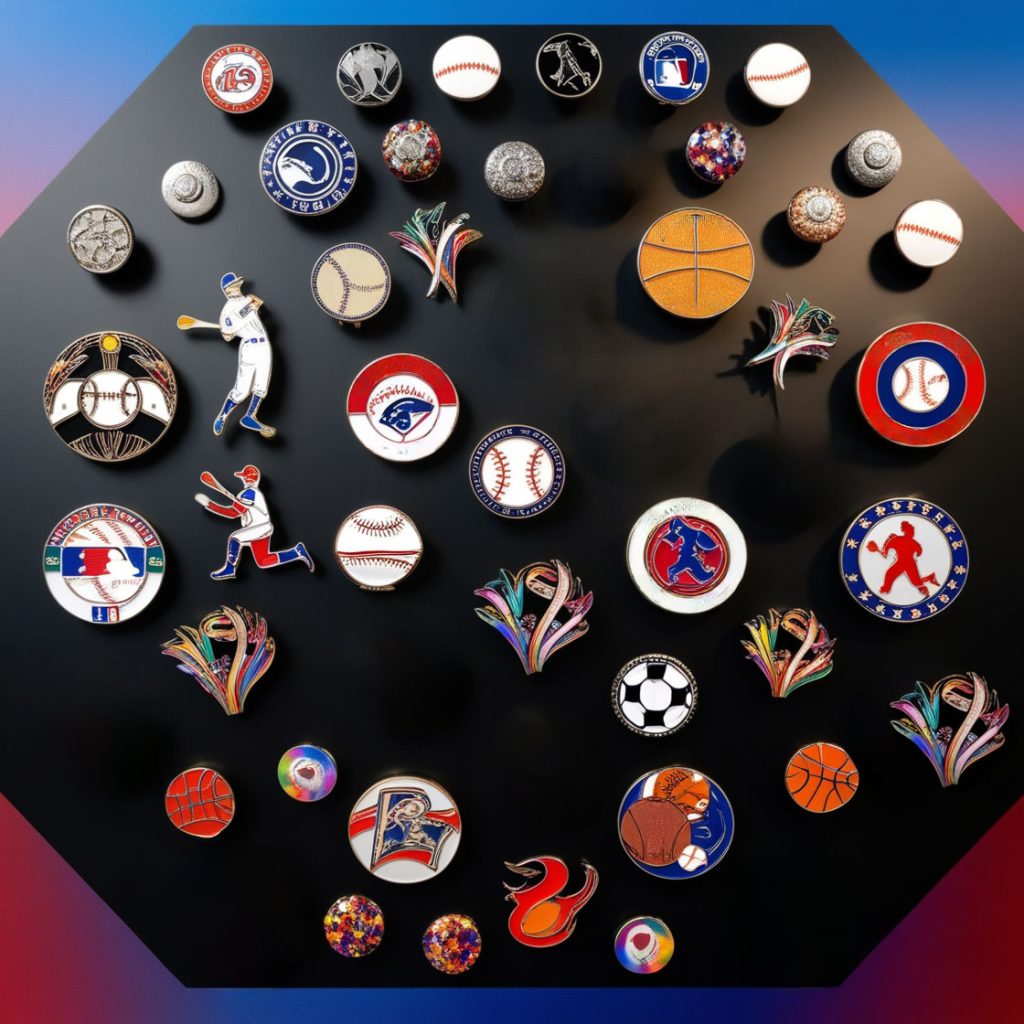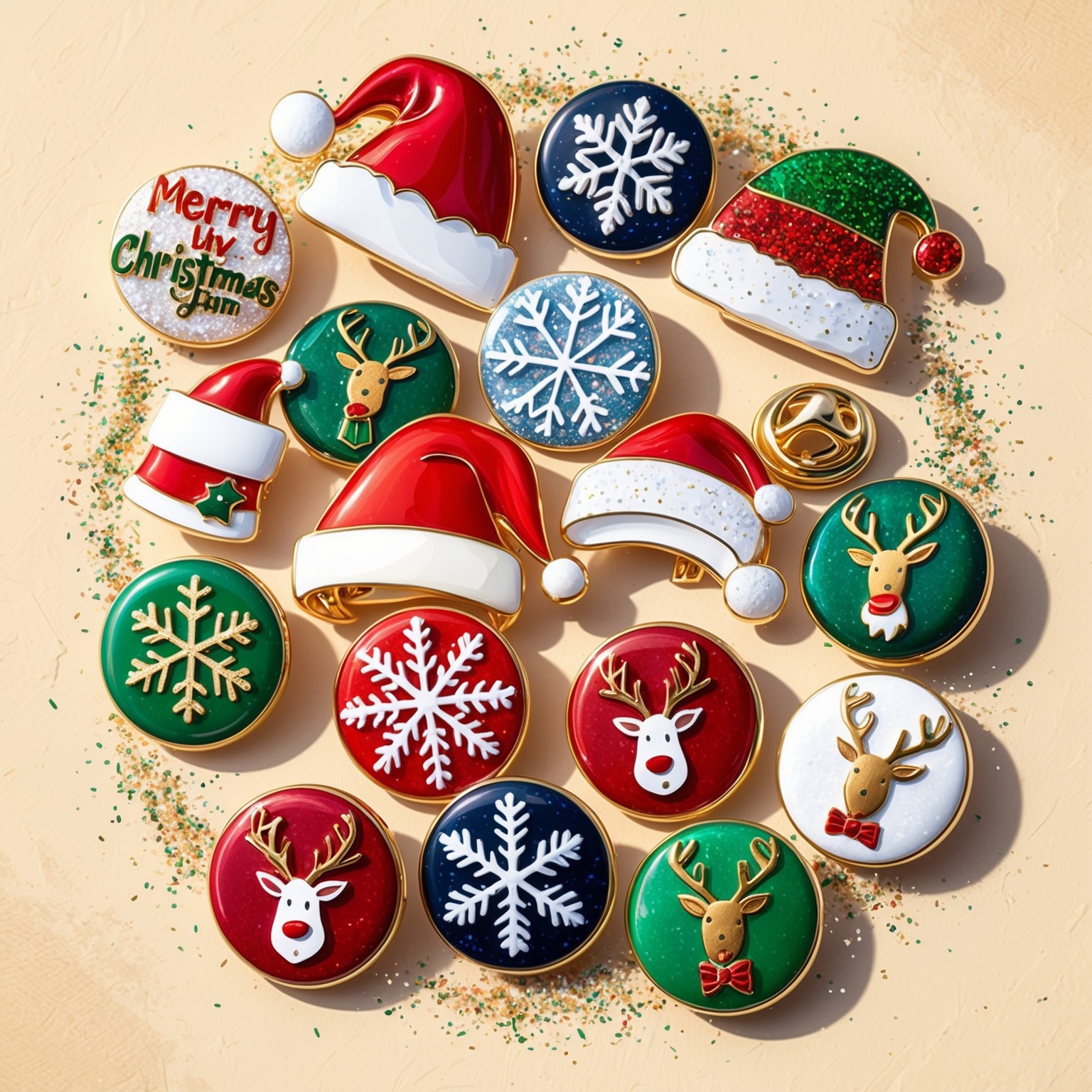Collecting sports trading pins has become an exciting and rewarding hobby for enthusiasts of all ages. Whether you’re a seasoned collector, a sports team member, or a passionate fan, sports trading pins offer a unique way to commemorate events, celebrate achievements, and connect with fellow collectors. The appeal of these small but meaningful pins goes beyond their vibrant designs—they also represent a piece of sports history and the camaraderie associated with trading them at games, tournaments, and events.
Building a sports trading pin collection can be a fun and fulfilling endeavor, but it requires strategy, knowledge, and dedication. From understanding the history of trading pins to knowing where to find rare and exclusive pieces, successful pin collecting demands more than just an eye for design. To help you get the most out of your collection, this guide offers 10 smart tips and strategies that will help you grow and enhance your sports trading pin collection.
Whether you’re new to collecting or a seasoned pin trader, these winning tactics will give you the edge you need to build a collection that you can be proud of.
1. Understand the History and Culture of Sports Trading Pins
Before diving into the world of sports trading pins, it’s essential to understand their origins and significance. Sports trading pins have a rich history, particularly in youth and amateur sports, where they are often used as tokens of camaraderie and symbols of achievement. Trading pins became especially popular in Little League Baseball and youth soccer, where teams and fans would exchange pins during tournaments and championship games.
Sports trading pins are often customized for specific teams, leagues, or events. Their colorful designs and unique shapes make them highly collectible, and they are frequently traded among players, coaches, and fans. Each pin tells a story, whether it’s commemorating a victory, a special event, or representing a team’s identity.
Familiarizing yourself with the history and culture of sports trading pins will deepen your appreciation for the hobby. Knowing the background of pins in different sports and events can also help you identify valuable and significant pieces for your collection. For example, pins from major tournaments like the Little League World Series or Olympic events may hold more value due to their historical significance.
2. Start with a Clear Theme or Focus
As you begin building your sports trading pin collection, it’s important to start with a clear theme or focus. Having a specific theme will help you narrow down the types of pins you want to collect and make it easier to organize and display your collection.
Here are some common themes that sports trading pin collectors may focus on:
- Specific Sports: Some collectors choose to focus on a particular sport, such as baseball, soccer, or hockey. Collecting pins from a single sport allows you to dive deep into the history and evolution of trading pins in that sport, giving you a more cohesive collection.
- Teams or Leagues: Many collectors focus on building a collection centered around a favorite team or league. For example, you might collect pins from your favorite baseball team, or you could aim to collect pins from different teams in a specific league, like Major League Baseball (MLB) or the National Hockey League (NHL).
- Tournaments or Events: Some collectors prefer to focus on pins from specific tournaments or sporting events, such as the Olympics, the Little League World Series, or national championship tournaments. Event-specific pins often have unique designs and can become highly sought after, particularly if the event was historic.
- Time Periods: Collecting vintage sports trading pins from specific time periods, such as the 1980s or 1990s, is another popular strategy. Vintage pins often have distinct designs and can be rarer due to their age, making them valuable additions to a collection.
Choosing a focus for your collection will make the process more enjoyable and allow you to build a more curated and meaningful collection over time.
3. Know the Different Types of Sports Trading Pins
Not all sports trading pins are created equal, and there are various types of pins that collectors should be aware of. Understanding the different categories of sports trading pins will help you make informed decisions about which pins to collect and trade.
Common Types of Sports Trading Pins:
- Soft Enamel Pins: Soft enamel pins are the most common type of sports trading pin. They feature raised metal edges and recessed, colored enamel fills. These pins have a textured feel and are popular for their vibrant colors and detailed designs. They are also relatively affordable, making them great for beginners.
- Offset Printed Pins: Offset printed pins are created using a printing process that allows for more intricate designs, such as photographs or complex graphics. Unlike enamel pins, offset printed pins have a smooth surface without raised or recessed areas. These pins are often used for event-specific designs or when a high level of detail is required.
- Die-Struck Pins: Die-struck pins are made by stamping the design into the metal, creating a raised and recessed pattern. These pins often have a more classic and elegant appearance, as they don’t typically feature colored enamel. They are often used for commemorative or milestone pins.
- Glitter and Spinner Pins: For those who enjoy collecting eye-catching and fun designs, glitter and spinner pins are popular options. Glitter pins include a shimmering glitter effect within the enamel areas, while spinner pins feature a movable component that adds interactivity to the design.
- Limited Edition or Commemorative Pins: Limited edition pins are produced in small quantities and often commemorate a special event, championship, or anniversary. These pins tend to be more valuable due to their rarity, making them highly sought after by collectors.
By familiarizing yourself with the various types of sports trading pins, you can diversify your collection and appreciate the craftsmanship that goes into creating different pin styles.
4. Network and Trade with Other Collectors
One of the most enjoyable aspects of collecting sports trading pins is the opportunity to trade and connect with other collectors. Trading is an essential part of the sports pin community, and networking with fellow enthusiasts can help you expand your collection while making new friends.
Here are a few ways to network and trade pins with other collectors:
- Attend Sports Events and Tournaments: Many sports events, particularly youth tournaments and championships, offer opportunities for pin trading. Little League Baseball games, soccer tournaments, and cheerleading competitions are known for their vibrant pin-trading culture. Make it a point to bring extra pins to these events and be open to trading with other attendees.
- Join Online Communities: There are several online communities and forums dedicated to sports trading pin enthusiasts. Joining these groups allows you to connect with collectors from around the world, participate in pin trading discussions, and even arrange trades. Social media platforms like Facebook, Instagram, and Reddit are great places to start looking for pin-trading groups.
- Attend Pin-Trading Conventions or Expos: There are pin-trading conventions and expos where collectors gather to trade pins, showcase their collections, and find rare pieces. These events are a fantastic opportunity to meet other pin enthusiasts and discover exclusive or limited-edition pins that may not be available elsewhere.
- Connect with Teams and Players: If you’re a fan of youth sports, you can often trade pins directly with the players and coaches at tournaments. Teams frequently design their own custom trading pins and may be willing to trade pins with fans or other teams. This type of personal interaction can add a special connection to your collection.
Networking with other collectors and participating in trades not only enhances your collection but also makes the hobby more social and engaging.
5. Look for Rare and Limited Edition Pins
As with many collectibles, rarity plays a significant role in determining the value and desirability of a sports trading pin. Rare pins, especially limited edition or event-specific pins, tend to be more sought after by collectors, and acquiring these pins can make your collection stand out.
Here’s how to identify and acquire rare pins:
- Limited Edition Pins: Many sports trading pins are produced in limited quantities to commemorate specific events or anniversaries. These limited edition pins are often marked with the total number produced (e.g., “1 of 500”) and are more valuable due to their scarcity. Keep an eye out for limited edition pins when attending events or browsing online marketplaces.
- Vintage Pins: Vintage sports trading pins from past decades are often harder to find and can carry significant value, especially if they are well-preserved. Pins from historic tournaments, such as past Olympic Games or Little League World Series, are particularly desirable among collectors.
- Player-Specific or Autographed Pins: Some trading pins feature specific players or have been autographed by athletes. These pins can become highly sought after, especially if the player has achieved fame or accomplished significant milestones in their career.
- Error Pins: In some cases, a manufacturing error in a batch of pins can result in a unique variation that is considered rare. Error pins, which may have misspellings, misaligned colors, or incorrect designs, can become collectible due to their novelty.
To find rare pins, you can search online marketplaces, such as eBay or specialized trading pin websites, as well as attend trade shows, conventions, or major sporting events where these pins might be available.
6. Properly Store and Display Your Collection
Once you’ve started building your sports trading pin collection, it’s important to take care of your pins to ensure they remain in good condition. Proper storage and display not only protect your collection but also allow you to showcase your pins in a visually appealing way.
Tips for Storing Your Sports Trading Pins:
- Use Pin Display Books: Display books or albums designed for lapel pins are an excellent way to organize your collection while keeping it safe. These books typically feature fabric-covered pages that allow you to attach your pins securely. Display books are also portable, making it easy to take your collection to events or trade shows.
- Store Pins in Shadow Boxes: Shadow boxes are a popular option for displaying pins in a way that keeps them visible while protecting them from dust and damage. You can arrange your pins in the box and hang it on a wall as a decorative piece. Many collectors use shadow boxes to highlight special or rare pins in their collection.
- Pin Display Cases: If you have a large collection, investing in a pin display case with glass doors can be a great way to keep your pins organized and protected. Display cases come in various sizes and can hold hundreds of pins, making them ideal for serious collectors.
- Separate by Theme or Event: Organizing your collection by theme, event, or time period can help you keep track of your pins and display them in a meaningful way. For example, you could create separate sections for baseball, soccer, and basketball pins, or organize them by year of the event.
Proper storage and display not only enhance the visual appeal of your collection but also help preserve the condition of your pins over time.
7. Trade Pins with a Strategy
When it comes to trading sports trading pins, having a strategy can help you acquire the pieces you want while maximizing the value of your trades. Not all pins are equal in terms of value or rarity, so it’s important to assess the worth of a pin before making a trade.
Pin Trading Tips:
- Know the Value of Your Pins: Before trading a pin, research its value to ensure you’re making a fair trade. Rare or limited edition pins may be worth more than common pins, so you’ll want to know the approximate value of each pin in your collection.
- Offer Something Valuable in Return: If you’re trying to acquire a rare or highly desirable pin, make sure you offer something of equal or greater value in return. This might include offering multiple pins for a single rare pin or trading a limited edition pin for another limited edition piece.
- Be Open to Negotiation: Trading pins is often a social activity, and negotiating with other collectors can be part of the fun. Be open to discussing the terms of the trade and consider how much a particular pin means to you before making a final decision.
- Establish Trade Relationships: Over time, you’ll likely develop trade relationships with other collectors. Building trust with fellow traders can lead to better opportunities for acquiring rare or hard-to-find pins. Regularly attending events and participating in pin-trading communities will help you establish these relationships.
Strategic trading will help you grow your collection and ensure that you’re acquiring pins that truly add value to your collection.
8. Attend Major Sports Events and Championships
Attending major sporting events, championships, or tournaments is one of the best ways to acquire exclusive sports trading pins and engage in live trading. Many of these events feature special edition pins that are only available for a limited time, making them valuable additions to any collection.
Events to Consider Attending for Pin Trading:
- Little League World Series: One of the most iconic events for sports trading pin enthusiasts, the Little League World Series is a hotspot for pin trading. Teams and fans from around the world participate in trading, and exclusive pins are often created for the event.
- Olympic Games: The Olympic Games are another major event where sports trading pins hold significant value. Each Olympics produces a wide variety of pins, including those featuring specific sports, host cities, and national teams.
- NCAA Tournaments: College sports tournaments, such as the NCAA basketball tournaments or baseball championships, often feature event-specific trading pins. Collecting pins from these major tournaments can add a prestigious element to your collection.
- Youth Sports Championships: Youth sports tournaments for soccer, baseball, hockey, and other sports often feature vibrant pin-trading cultures. These events are great for acquiring custom team pins and engaging with fellow collectors.
By attending major sports events, you’ll have the opportunity to find rare pins, trade with other collectors, and build connections within the sports pin community.
9. Research Pin Values Before Buying
When purchasing sports trading pins, especially from online marketplaces or at events, it’s important to research the value of the pin before making a purchase. Prices for trading pins can vary significantly based on factors like rarity, condition, and demand.
How to Research Pin Values:
- Check Online Marketplaces: Websites like eBay, Etsy, and specialized pin-trading platforms often have listings for sports trading pins. Check the asking prices for similar pins to get an idea of their market value.
- Consult Price Guides: Some collectors create price guides or databases for specific sports trading pins. These guides can be helpful in determining the approximate value of a pin, especially if it’s a rare or vintage piece.
- Compare Past Sales: Looking at the sales history of similar pins can give you an idea of their value. If a pin has sold for a high price in the past, it’s likely that it will continue to hold value in the future.
- Consider Condition: The condition of a pin is a key factor in its value. Pins in mint condition (with no scratches, fading, or missing parts) are typically worth more than pins that show signs of wear. Always assess the condition of a pin before making a purchase.
By researching the value of a pin before buying, you can avoid overpaying and ensure that you’re making informed purchasing decisions.
10. Have Fun and Enjoy the Process
At its core, collecting sports trading pins should be a fun and rewarding experience. While it’s important to use smart strategies and tactics to build your collection, remember that the joy of collecting comes from the connections you make, the events you attend, and the stories behind each pin.
Here are a few tips for enjoying the process:
- Share Your Collection: Show off your collection to friends, family, or fellow collectors. Sharing your passion for pin collecting can spark conversations and inspire others to get involved in the hobby.
- Document Your Collection: Keep track of the pins in your collection by creating a digital catalog or photo album. This will help you stay organized and allow you to document the stories behind each pin.
- Set Personal Goals: Whether it’s collecting pins from all 50 states or acquiring pins from a specific tournament, setting personal goals can give your collection purpose and direction. Achieving these goals can be incredibly satisfying and make the hobby more fulfilling.
By focusing on the enjoyment of collecting and the connections you make along the way, you’ll find that building your sports trading pin collection becomes a deeply meaningful and rewarding hobby.
Winning Tactics for Building Your Sports Trading Pin Collection
Collecting sports trading pins is a hobby that combines the thrill of the hunt with the joy of storytelling. Whether you’re focused on acquiring rare pins, trading with fellow enthusiasts, or simply commemorating your favorite sports events, the strategies outlined in this guide will help you build a collection that is valuable, meaningful, and fun.
From understanding the history of trading pins to networking with other collectors, these 10 smart tactics will give you the tools you need to create a standout collection. As you continue to collect, trade, and display your pins, remember to enjoy the process and celebrate the memories that each pin represents.
If you are interested in ordering some high-quality lapel pins, feel free to call us at our Toll free number 1-877-513-4811 or fill out one of our FREE QUOTE FORMS.



